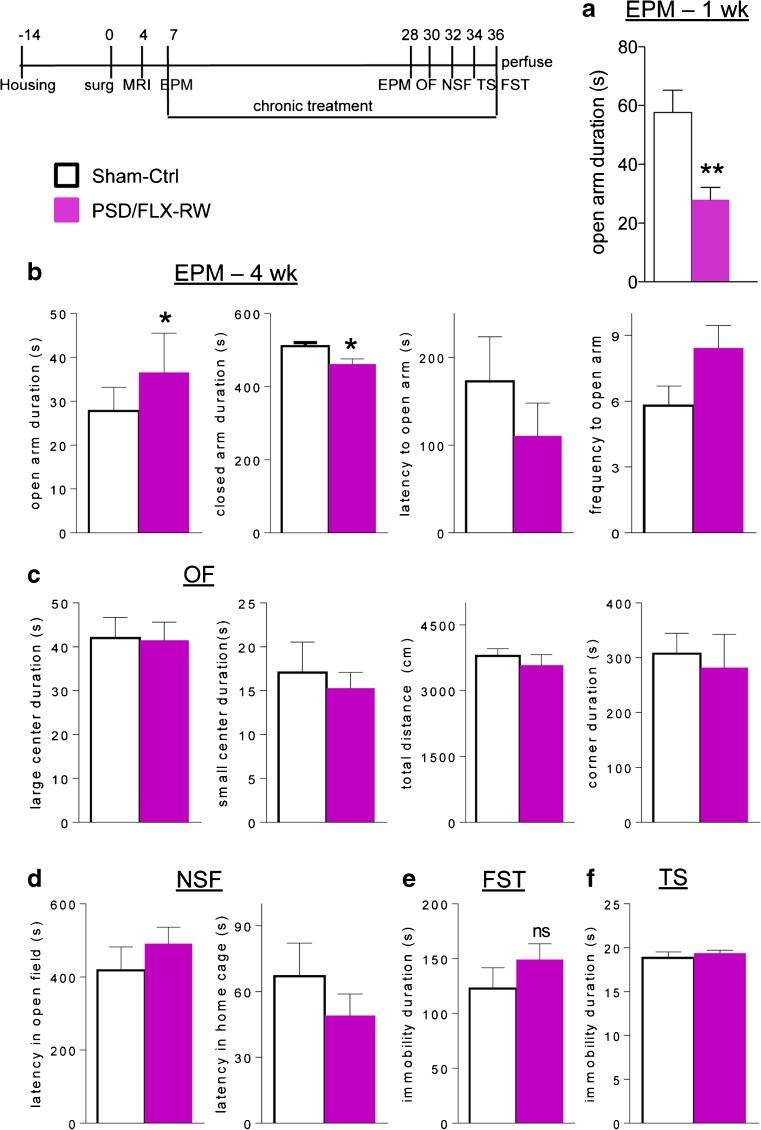Fig. 3.
Combination fluoxetine (FLX)–exercise treatment normalizes behavior of poststroke depression (PSD) mice. Timeline: mice were individually housed (Housing) 14 days prior to surgery (surg), microinjected with vehicle (Sham-Ctrl) or endothelin 1 (ET-1; PSD) in the left medial prefrontal cortex (mPFC; surg, day 0); at 4 days poststroke, lesions were verified by magnetic resonance imaging (MRI), and at 7 days anxiety phenotype verified by elevated plus maze (EPM); from 7 days onwards PSD mice treated with the combination of FLX and running wheel (PSD/FLX-RW) were compared with sham-injected mice treated with vehicle and fixed wheel (Sham-Ctrl). (A) EPM 1 week: at 7 days poststroke, PSD mice had reduced open-arm time compared with sham, indicative of an anxiety phenotype. (B) EPM 4 weeks: after 3 weeks of combination treatment, the PSD/FLX-RW mice showed increased time spent in the open arms compared with sham, indicating reduced anxiety. There was no difference in latency or frequency to enter the open arm vs sham. (C) Open field (OF) test: PSD/FLX-RW mice showed similar times spent in both large and small center and in corner duration compared with sham, and the same total activity in open arena. (D) Novel suppressed feeding (NSF): no difference was seen in latency to approach food in new arena or to feed in home cage. (E) Forced swim test (FST): no difference in immobility time was seen between groups. (F) Tail suspension (TS) test: no difference in immobility time was seen between groups. Data represent mean ± SEM; n = 12 per group, *p <0.05; **p <0.01

